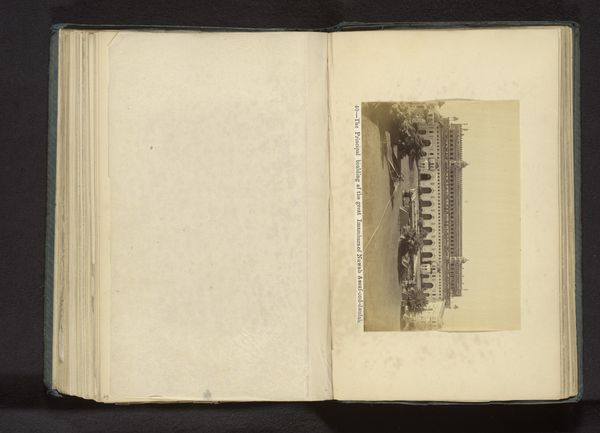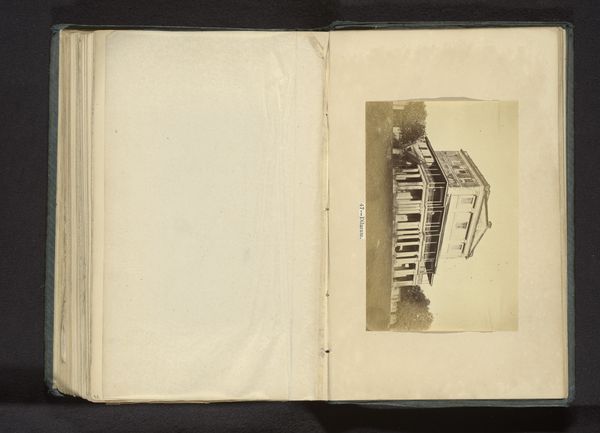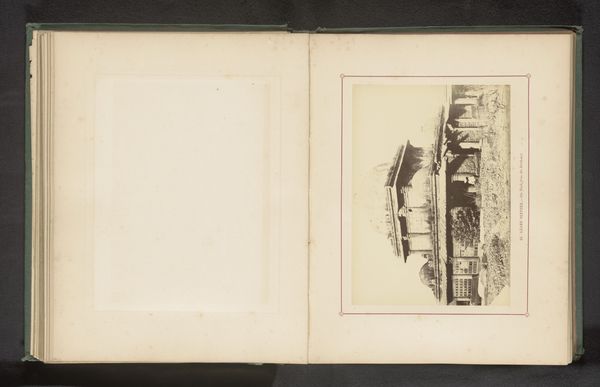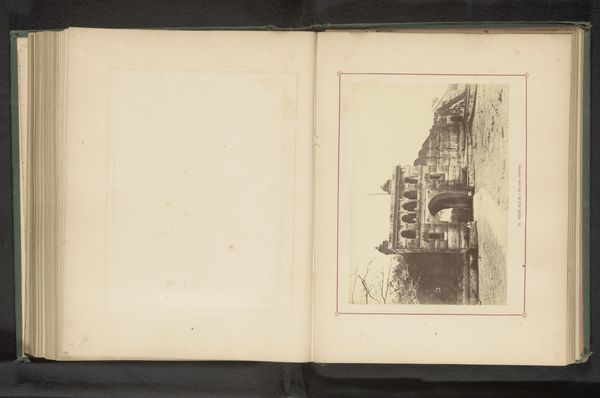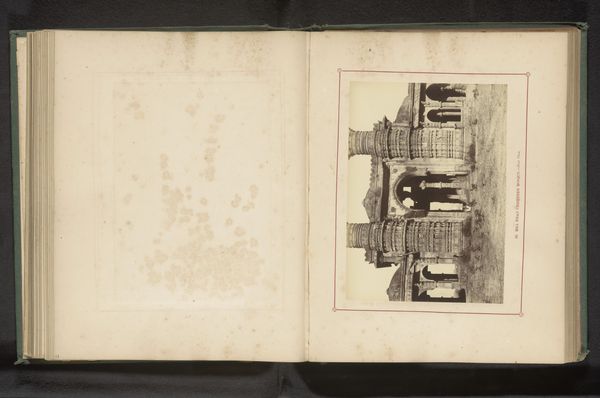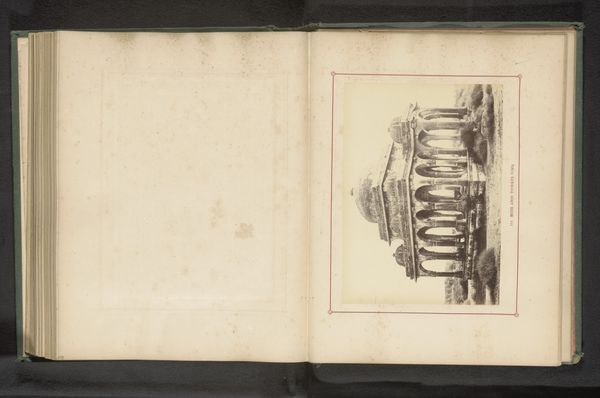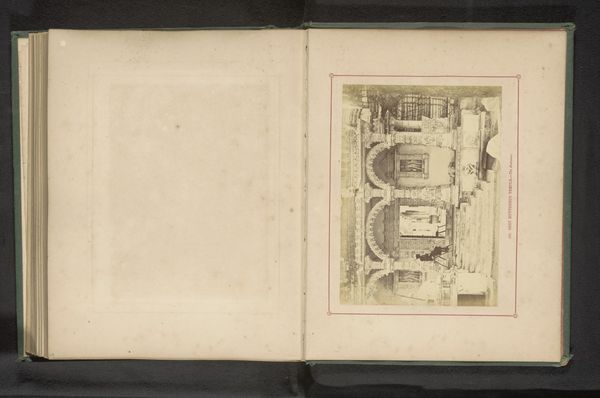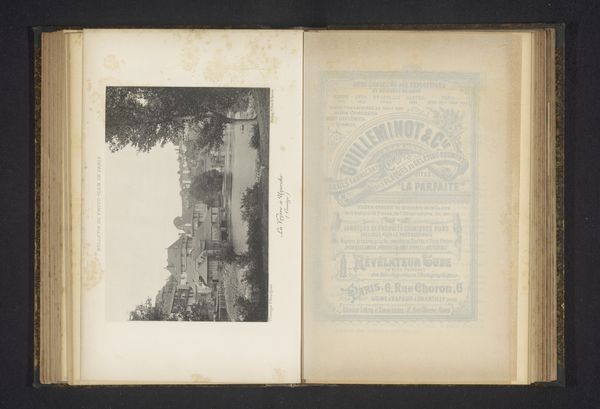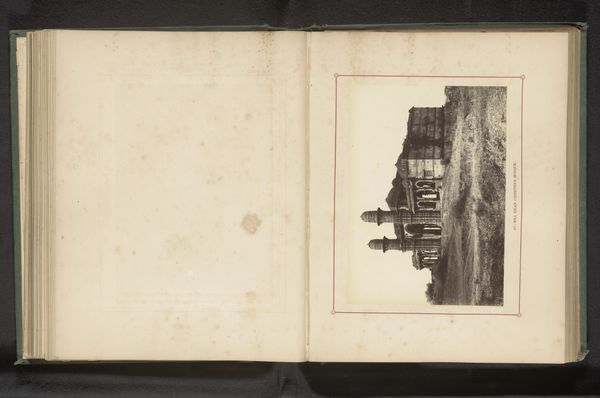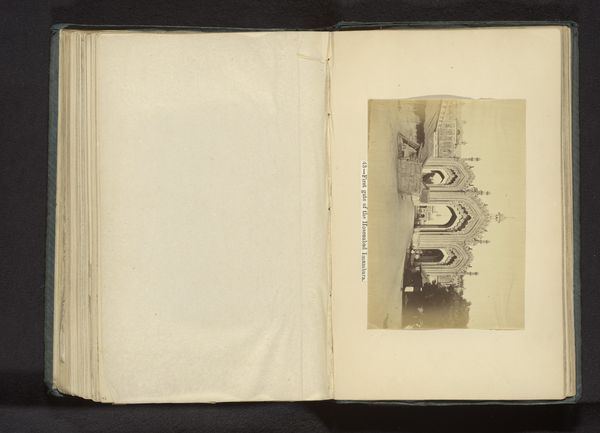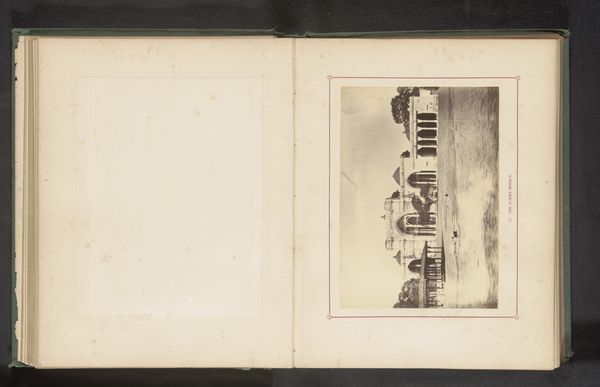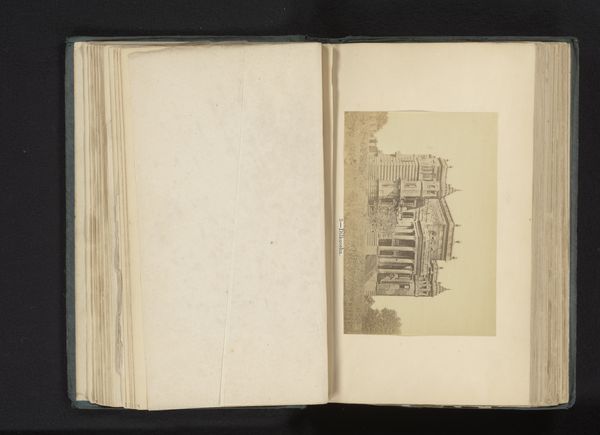
print, photography, albumen-print
#
ink paper printed
# print
#
asian-art
#
landscape
#
photography
#
coloured pencil
#
orientalism
#
albumen-print
Dimensions: height 136 mm, width 188 mm
Copyright: Rijks Museum: Open Domain
Editor: Here we have a photograph, an albumen print actually, entitled "Gezicht op de Shri Swaminarayantempel in Ahmedabad," placing it before 1866, taken by Thomas Biggs. It's fascinating, almost ghostly, to see this grand structure rendered in such detail. What strikes you most about it? Curator: The albumen print process itself is incredibly telling. Think about the layers of labor involved – the photographer, the printers preparing the paper, the darkroom work. It represents a specific historical moment of colonial enterprise and the technological advancements used to document and, in a way, possess these distant landscapes. Editor: Possess? Could you elaborate? Curator: Certainly. Photography like this, distributed in albums, fueled Orientalist fantasies in Europe. Consider how these images made foreign cultures digestible, transforming them into commodities for consumption. The temple, its architecture, it all becomes part of this visual inventory taken by the West. And the very material—albumen—derived often as a byproduct of industrializing egg production! What are the ethical considerations in seeing such labor materialize into ‘art’? Editor: So you are drawing a direct link between material production and colonial power... it gives a completely different meaning to the image itself! Curator: Exactly. And what of the temple's construction, the laborers who physically built the Swaminarayantempel? Are their hands, their histories, not also embedded within this image? How are their narratives eclipsed by Biggs, the colonial photographer? Editor: It’s amazing how looking at the material aspects and conditions can completely shift the way we perceive a seemingly straightforward landscape photo. Thanks for pointing this out. Curator: Indeed, materiality exposes the unseen forces shaping our world, prompting critical reflection on both the production and reception of art.
Comments
No comments
Be the first to comment and join the conversation on the ultimate creative platform.
